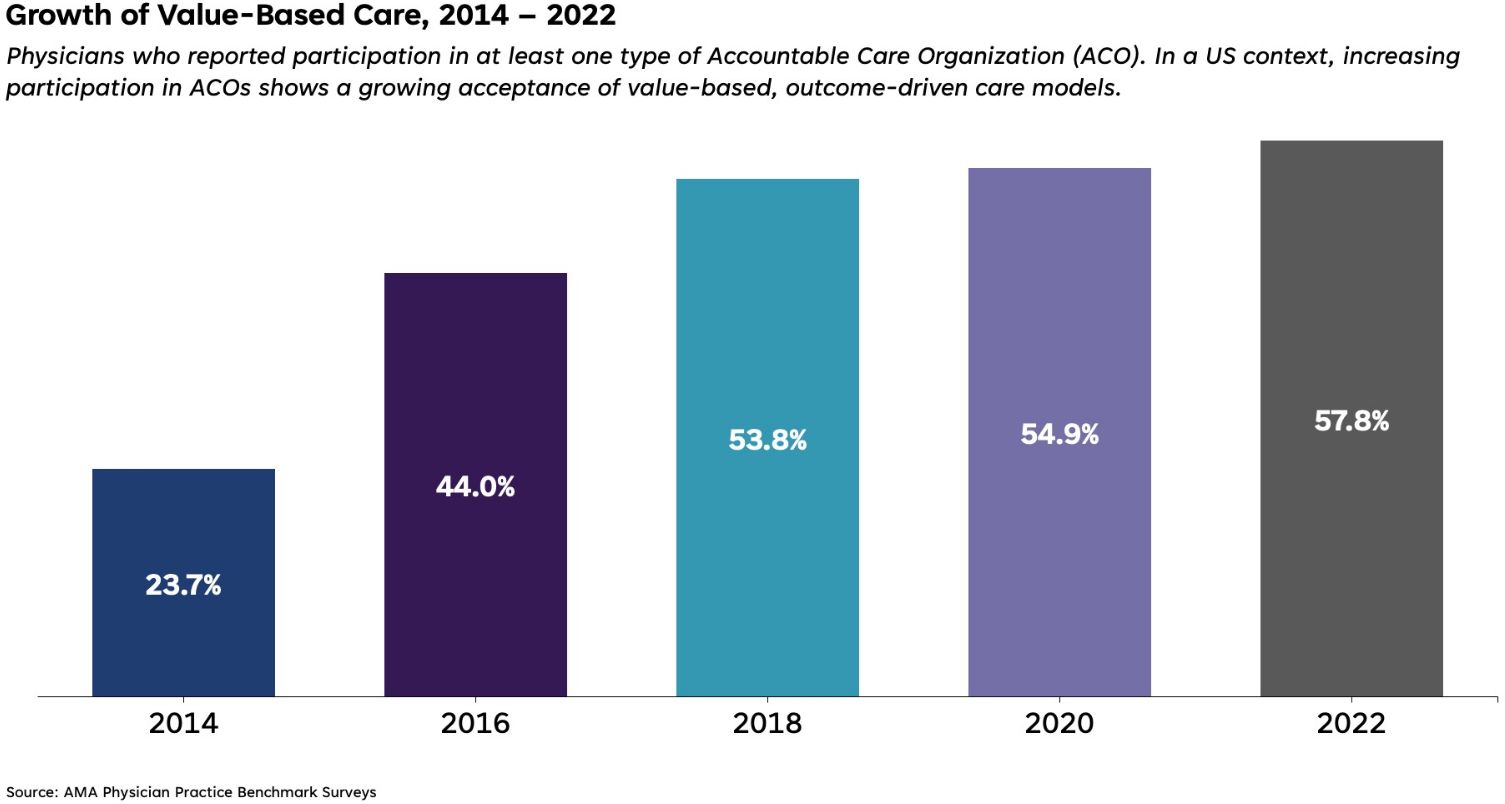The Path Forward with Advanced Technologies
AI and data analytics play a crucial role in overcoming the challenges of VBC implementation. For instance, AI can significantly reduce the cost of adopting new technologies by streamlining processes, such as automating administrative tasks like scheduling and billing. This efficiency not only cuts down on manual work and operational costs but also makes the transition to VBC more affordable for healthcare providers. Moreover, AI can help integrate and improve the functionality of outdated systems, rather than necessitating their complete replacement.
Once implemented, AI and data analytics can revolutionize the healthcare landscape. These technologies can automate the collection and analysis of data, providing invaluable insights on how to enhance care quality, patient outcomes, and operational efficiencies. AI can sift through vast amounts of patient data to identify at-risk populations, enabling proactive management to prevent complications. Meanwhile, data analytics tools can tailor care plans to individual patient needs based on evidence-based insights, thereby significantly improving patient outcomes.
These technologies can also streamline the management of VBC contracts by automating the tracking of quality metrics and generating compliance reports. This automation can significantly reduce the administrative burden associated with VBC, making it easier for providers to meet the stringent requirements tied to reimbursement rates. Specialized software platforms integrating with EHRs can automatically capture and report data relevant to VBC metrics, such as patient satisfaction scores and readmission rates. This not only simplifies the reporting process but also ensures accuracy and transparency, fostering trust between providers and payers.
Adopting AI, data analytics, and other digital tools becomes essential as healthcare providers and payers navigate the complexities of transitioning to value-based care. Leveraging these technologies allows healthcare providers to address the logistical and operational challenges of VBC, paving the way for a system that prioritizes patient outcomes over care volume. These levers are not solutions but mechanisms for organizations to bolster their capabilities to deliver effective care.





